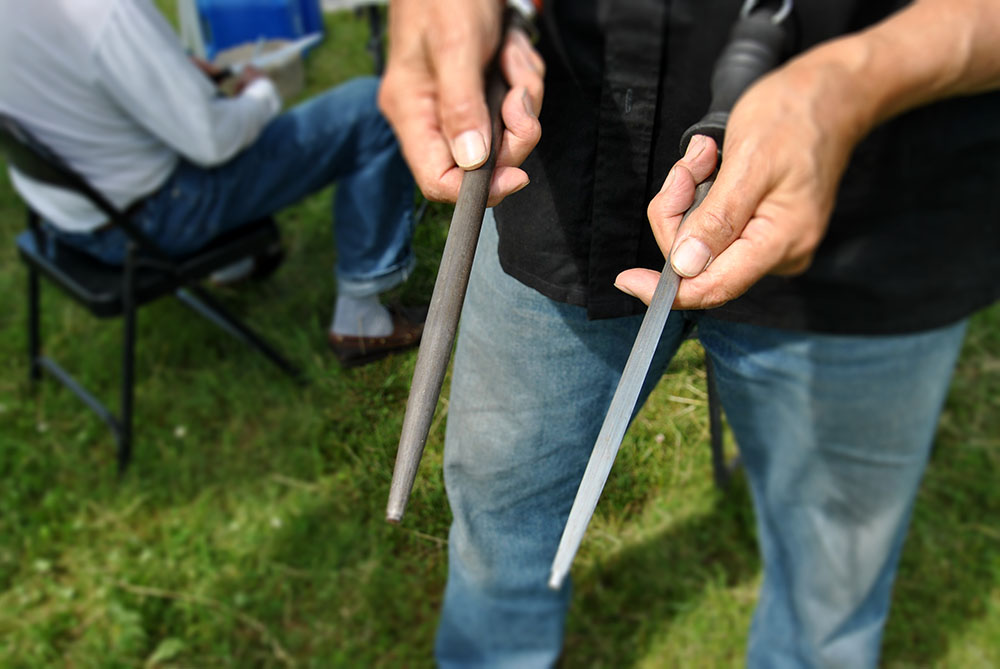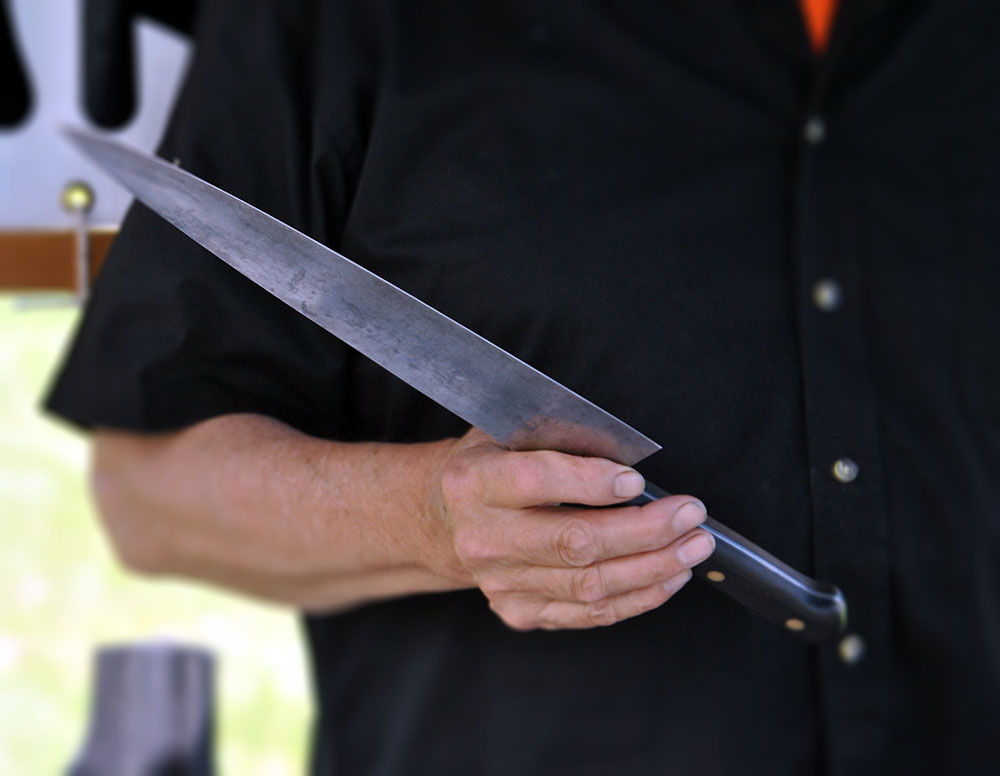How to care for kitchen knives
Whether you are dicing fresh vegetables, butchering backyard chickens or slicing homemade sourdough bread, having a quality set of kitchen knives can make all the difference in your culinary adventures. Caring for your kitchen knives, though, is just as important as purchasing a quality blade.
“Steel has a memory,” said Neill Peterson, owner of ACE Sharpening and Window Cleaning in Belfast, Maine.

When caring for a blade, many people confuse honing and sharpening. Honing is the regular process of using a steel rod to straighten the edge of your knife into its proper position, which can divert during use. Sharpening grinds bits of the blade off of the knife edge to create a fresh, sharp bevel.
Peterson said that if you care for your kitchen knives on a daily basis by honing, cleaning after use and properly storing them, you only have to sharpen them using a water stone or whetstone every six months.
How to hone kitchen knives
Peterson recommended honing your knives before every use using four basic steps.
- Position your knife perpendicular to your honing rod.
- Place the edge of the blade against the steel at a 15- to 20-degree angle, at the point of your knife blade that is closest to the handle. Peterson said to think about the position of your knife against the honing rod like a pair of scissors.
- Apply light pressure and slowly drag the blade down and across the steel until you reach the end of the steel and the tip of the knife. Make sure the rod has touched across the full length of the knife’s edge. Repeat 5 to 10 times.
- Repeat steps 1 through 3 on the other side of the blade.
How to wash kitchen knives
Peterson said that kitchen knives should also be cleaned and dried after every use.
“Stainless steel is named incorrectly,” Peterson laughed. “Acids in food will attack the edge of a stainless steel knife.”
Peterson suggested keeping a damp and lightly soaped towel next to where you are chopping so you can easily clean and dry the knife as you go.
The “capital sin” for a knife owner, Peterson said, is to run a nice kitchen knife through the dishwasher, especially for knives with permeable wood handles.
“It ruins the knife,” he sighed. “It causes corrosion and ruins the handle.”

Choosing a honing rod for your kitchen knives
Many kitchen supply stores sell excellent honing rods for a premium price, but Peterson said the best place to buy quality honing rods on a budget is the thrift store.
The best honing rods, Peterson said, will have many fine grooves rather than a lower density of coarser grooves. To test if the rod you found in the kitchen section of your local thrift store will be effective, Peterson said to drag your thumbnail along the grooves.
“If [your fingernail] gets caught, [the honing rod] is coarse,” he said. “Coarse steel is not good. You want finer grooves.”
How to store kitchen knives
Peterson said that while a block is a good choice for storing kitchen knives, a magnetic strip mounted on the wall of your kitchen is best. Not only are the dark block slots the perfect breeding ground for bacteria if an improperly cleaned knife is stored, but the insertion of a sharp knife wears down both the blade and the block.

“[If you use a] knife block, put [the knife] blade side up so it doesn’t wear out the wood,” Peterson said. “The preferred [choice for a knife block] is a sideways slot so it doesn’t chew up the wood.”
Peterson said to avoid storing knives loose in a kitchen drawer. If there is no alternative, keep the blades sheathed in a sleeve. Some knives come with their own plastic sleeves. If not, you can make your own by cutting, folding and taping the cardboard from a pizza box or cracker box to fit the blade.
Whether the knives are in a block or on the wall, Peterson said all knife owners should keep three things by their knives in addition to a honing steel in order to conduct quick repairs and prevent unnecessary damage:
- A plain screwdriver
- A Phillips screwdriver
- An oyster knife (opening oysters with a regular knife, which Peterson said is all too common, will leave your knife dented and marred)
Choosing kitchen knives
Chefs often debate which knives are best for different kitchen tasks. The most popular quality knives are generally made from stainless steel.
Peterson, however, believes that the best kitchen knife is not stainless steel. Carbon steel knives, he said, are easier to sharpen, can be made thinner and are easier to handle because they are not as hard as stainless steel.
“[A carbon steel knife] will rust if you don’t wipe it, but you can clean rust up with fine sandpaper,” he said.

Though the stainless steel versus carbon steel debate continues, Peterson and most knife experts agree that serrated blades are inferior.
“I hate them,” he laughed. “They are not easy to sharpen.”
Serrated blades are often used to cut bread, but Peterson said that all comes down to technique. To cut a crusty baguette, for example, Peterson said to turn the loaf on its side and tap on the board to break through the crust before using a straight blade to slice through instead of sawing the bread with a serrated knife.
“You don’t need a serrated blade for bread if your knife is sharp enough,” Peterson said.
The value of a quality cutting board
When it comes to chopping, Peterson said that a quality cutting board is just as valuable as a good knife.
“The most important tool in the kitchen is a cutting board,” Peterson said. “It will last forever if you don’t use a serrated blade and clean it with vinegar.”
Plastic cutting boards, though initially more sanitary than their wooden counterparts, quickly develop grooves that harbor bacteria. Trendy bamboo cutting boards, while also a good choice for hygiene and reducing plastic use in the kitchen, are less durable than wood and can damage knife blades over time. For wood cutting boards, Peterson recommended maple. Oak, he advised, is too hard.
Peterson warned that once you start paying proper attention to your knives, you may grow obsessive.
“Listen to the singing of the blade,” he said as he honed his carbon steel knife. “You can fall in love with stuff like this.”
